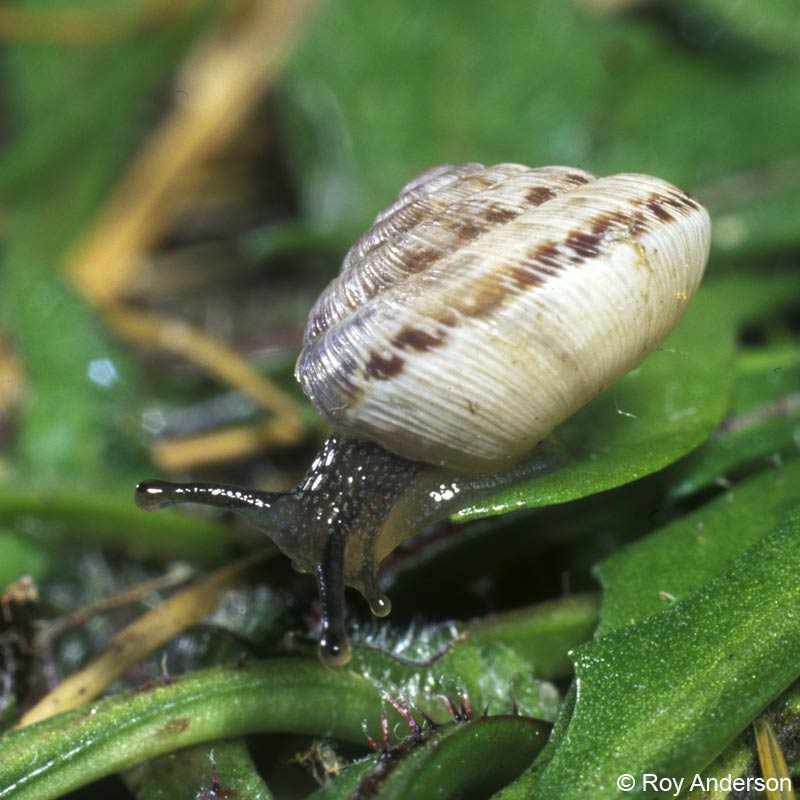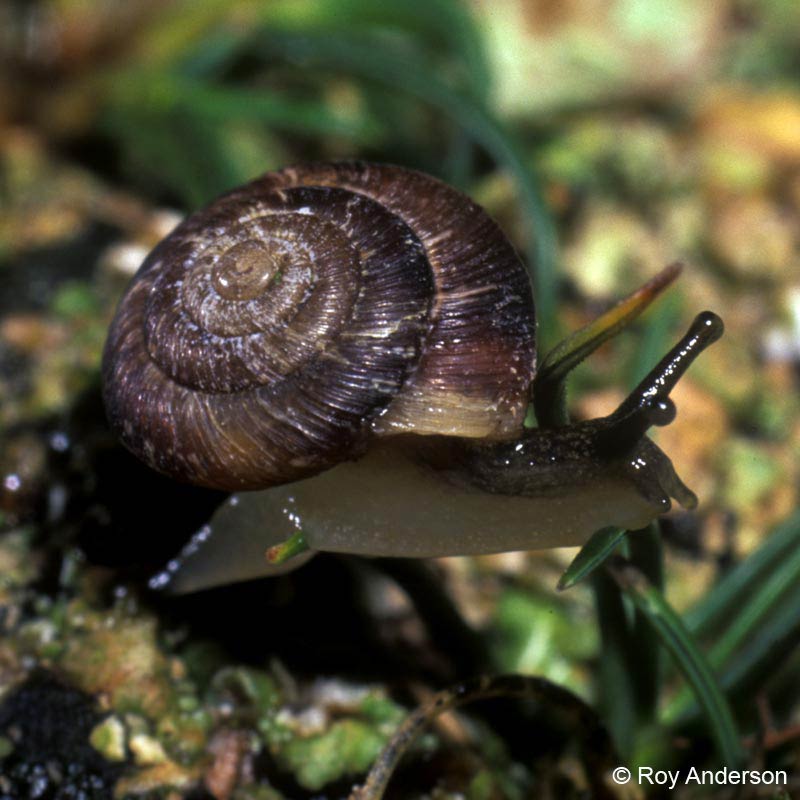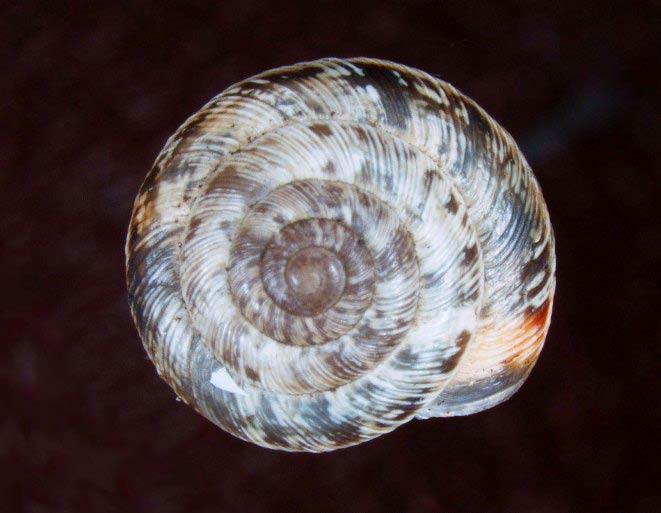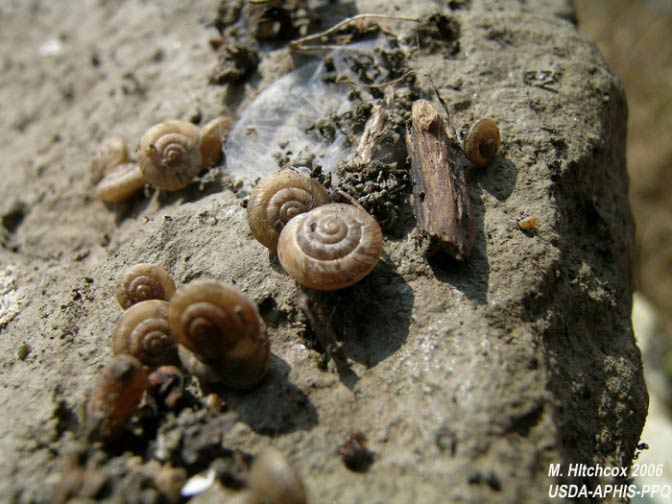Candidula intersecta
|
Candidula intersecta. (Photo: © Dr. Roy Anderson, MolluscIreland) |
|
Candidula intersecta. (Photo: © Dr. Roy Anderson, MolluscIreland) |
|
Candidula intersecta. (Photo: © M. Hitchcox, USDA-APHIS-PPQ) |
|
Candidula intersecta. (Photo: © M. Hitchcox, USDA-APHIS-PPQ) |
|
Candidula intersecta. (Photo: © M. Hitchcox, USDA-APHIS-PPQ) |
|
Candidula intersecta. (Photo: © M. Hitchcox, USDA-APHIS-PPQ) |
Family
Hygromiidae
Species
Candidula intersecta Poiret, 1801
Common name
Wrinkled dune snail
Description
The wrinkled dune snail's shellShell:
A hard, inflexible, calcareous or chitinous structure that vary in size and may either completely encasing the animal, covering some part of it or be internal.
can attain a heightHeight:
The height of the shell is a measure of the distance between the apex and the most basal part of the shell OR the measurement taken from the apex of the shell to the base, when measured parallel to the axis of the shell.
of 5-8 mm and a widthWidth:
The width of the shell is the maximum distance across the shell (including the aperture).
of 7-13 mm, with 5 to 6 1/2 whorlsWhorls:
Pleural of whorl. A whorl is a complete spiral turn/growth of the shell of a mollusc. The whorls are counted from the apex outwards.
. The shellShell:
A hard, inflexible, calcareous or chitinous structure that vary in size and may either completely encasing the animal, covering some part of it or be internal.
is off-white to pale yellow in color with brown bands or spots. The color pattern of this species is variable. There is often an irregular white stripe on the body whorlBody whorl:
The large, final coil (most recently formed) of a mollusc shell that contains the body of the snail, i.e. from the aperture to approximately one whorl back.
. Albino or brown-colored morphs of this species have been reported in Europe. The body of the animal is pale yellow or blue-gray in color.
Native range
Western Europe
Distribution
North America:
- U.S.: Oregon
South America: Columbia, Chile
Australasia: New Zealand, Australia
Europe
Ecology
This species is often found in open, dry areas (e.g., pastures and coastal plains). It is reported to be a pest of apples, pears, plums and peaches. The snail will damage the fruit while it is still attached to the tree. Apart from the direct, reduced market value of the fruit, this type of feeding damage allows for secondary infections to the fruit and tree. In some instances, the tree may die from such infections. This species also feeds on both the seeds and the seedlings of cereal crops. The wrinkled dune snail has the propensity to aggregate on vertical structure (e.g., plants, fences); as such, they often pose a contamination risk to cereal grains during harvest, as well as allow for secondary infestation by fungal pathogens, which may make the grain toxic. In field cropping systems, this species is able to survive cultivation, therefore making it difficult to manage.
Synonyms
- Helix intersecta Poiret, 1801
References
Anderson 2005Anderson 2005:
Anderson, R. 2005. An annotated list of the non-marine Mollusca of Britain and Ireland. Journal of Conchology 38: 607-637.; Godan 1983Godan 1983:
Godan, D. 1983. Pest slugs and snails. Biology and control. Springer-Verlag, Berlin. pp. 1-445.; Kerney et al. 1979Kerney et al. 1979:
Kerney, M.P., R.A.D. Cameron and G. Riley. 1979. A field guide to the land snails of Britain and North-west Europe. Collins, London. pp. 288.







